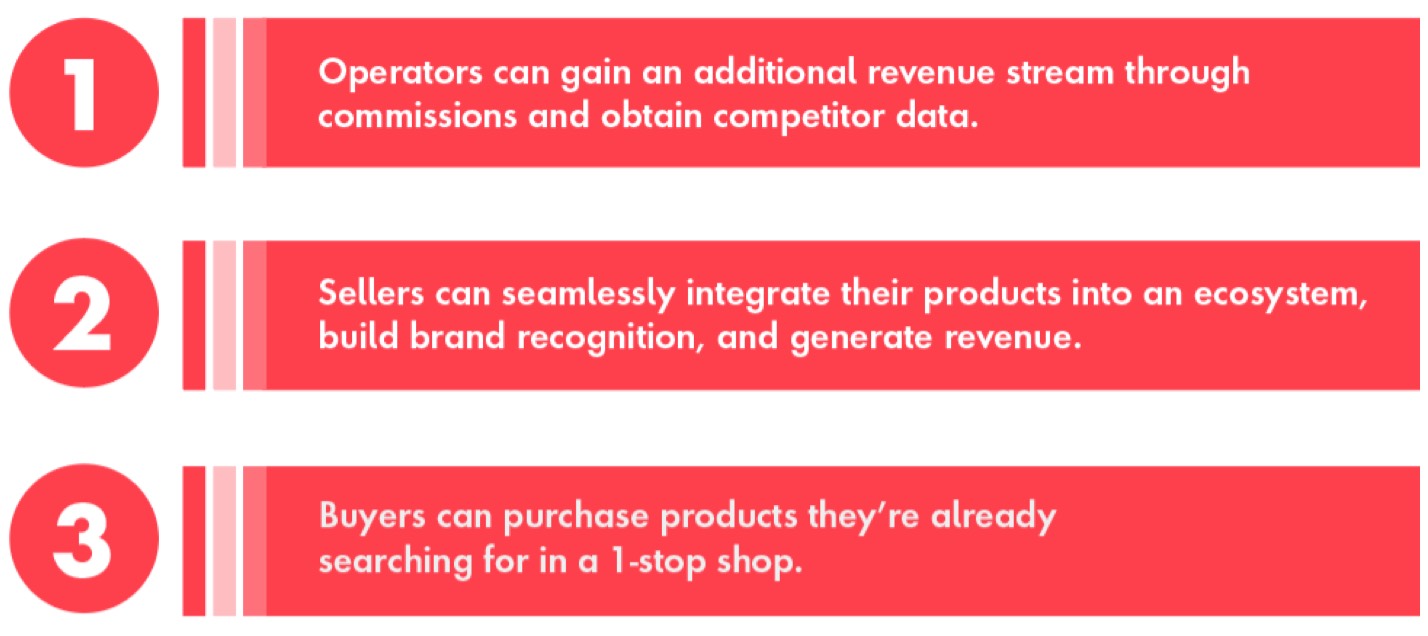What issue can we solve for you?
Type in your prompt above or try one of these suggestions
Suggested Prompt



Telecommunications, Media & Technology
5 Questions to Ask About Creating a Marketplace Strategy for Consumer Tech
Marketplace experiences have found their place within the consumer tech landscape and show no signs of slowing down. A marketplace helps consumers cut through the clutter of overwhelming choices and feel confident that their choices will work and work together with other parts of their ecosystem.
For some companies, creating or joining a marketplace can be a profitable and scalable business model. Let’s dive into five questions to ask to achieve a winning marketplace strategy for consumer tech.

To generate the maximum value from a marketplace, companies need to assess their business case before building a strategy, identify value pools, and determine the level of effort required to get the marketplace off the ground.
For some parts of the consumer tech industry, there are already dominant marketplaces. Examining the competitive landscape can help determine what marketplace solution is the best fit. This process provides a framework for deciding what model will generate the most value and profitability, highlighting associated costs and assessing the best technology fit.

After deciding on the business case, companies should consider the following marketplace models:
- Seller model (B2C vs. B2B vs. C2C)
- Assortment strategy (product/solution vs. brand/lifestyle and frequent vs. infrequent)
- Invite strategy (open vs. closed)
- Logistics (3PL vs. 1PL)
- Pricing strategy (dynamic vs. fixed)
- Social proof strategy (monitored vs. unmonitored)

Marketplace operators need to take care of demand generation, attract buyers and sellers, facilitate transactions, and control and manage data. In the consumer tech space, operators must work well with digital shopper-marketing platforms to enable incremental profit and more control of discoverability for sellers.
Marketplace buyers want to feel confident that the products they purchase will work within their current product ecosystem. Operators attract buyers by having a reliable merchandising strategy in place and supplying an attractive product mix.
-

Operators:
- Orchestrator of the ecosystem, connecting buyers to sellers
- Responsible for demand generation
- Responsible for facilitating transactions
- Controls and manages the data
- Benefits for Operators:Visibility into competitor data, commission from sellers
 Sellers:
Sellers:- Provider of the goods
- Responsible for fulfillment (may delegate to operator or 3rd party)
- Usually pays a commission or fee to the operators to sell their products
- Benefits for Sellers: Gain additional product visibility, smaller retailers can establish themselves among bigger competitors

Buyers:
- Researching multiple options and considering different sellers
- Usually, price conscious
- Benefits for Buyers:Buyers have more product assortment, greater confidence and reliability that the products they purchase will work within their current ecosystem
Marketplace personalization is another demand generation driver as it allows for more assortment online without being overwhelming. A personalized marketplace experience can become an essential differentiator as it enables a seamless purchasing process.

Sellers look for operators that provide seamless onboarding, manage product information, imagery and other metadata. Sellers will likely put a premium not only on the revenue and profit they make from a specific marketplace but also the amount of buyer data the operator is willing to “share back” to the seller.
Sellers implement their own fulfillment models within a marketplace. Because inventory numbers are visible to buyers, employing a successful fulfillment model is key for maintaining a seller’s brand reputation. Marketplace operators with dynamic pricing, fulfillment options & flexibility are more likely to obtain and retain sellers.
Providing an experience with minimal friction for sellers to incorporate their products into the marketplace is a win-win-win situation for the operator, seller, and buyer.


As operators plan their marketplace strategy, they need to answer the following questions:

- What should our marketplace represent to buyers?
- Are we a best-price aggregator?
- Are we a curator of products?
- Are we a curator of buyers?
- What is our value proposition to sellers?
- Do we bring them buyers that they would not have had access to?
- Does adjacency to other products they don’t sell create new opportunities for them?
- How do we ensure the best experience for both our buyer and sellers across their end-to-end journeys?
- How do we provide frictionless experience and technical integrations with our sellers?
- How do we monetize our data? Should we share data back to sellers, and if so, what data?
Management consultants who understand marketplace value propositions are a useful resource and can help build out the strategy around operations.

A rapid flow of high-quality data is essential for successful marketplace operations. Retailers creating marketplaces need to operate as Algorithmic Retailers with dynamic, AI-driven tools for buyers, sellers and managers.
Typically, the marketplace operator owns customer data, including their competitors’ data, transaction data, and behavioral/analytical data. Unless the seller can negotiate a data-sharing agreement with the operator, they may lose the ability to extend that data into better offerings and customer service.
It’s important to have a process for managing product data. Implementing a “test and learn” model with sellers can quickly help operators measure success within their marketplaces. Operators don’t have to buy the sellers’ inventory, so they can swiftly onboard and offboard sellers as they see fit.

Marketplaces eBook
Save a copy of our eBook and learn how to adapt the proper marketplace model for your business.
If you’re interested in learning more about marketplaces and which model is most applicable for your business, let’s connect!
Start a Conversation
Related Reading
-
![#]()
Article
Welcome to Marketplaces: The Next Evolution in E-Commerce
Learn three ways to capture marketplace opportunities and generate new revenue by using data to your brand’s advantage.
-
![#]()
Article
Marketplaces: Where Competitors Become Commerce Comrades
Learn how our marketplace solution generates sales, attracts customers, and enhances third-party partnerships.
-
![#]()
Case Study
How a Leading CPG Overcame D2C Challenges With Transformative Thinking
Direct-to-consumer can be new territory for CPG firms. See how one leading brand is bringing its new business model to life.







